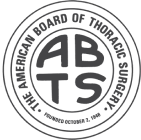















This October 13th, as we recognize World Thrombosis Day, it’s time to set the record straight on blood clots and deep vein thrombosis (DVT). Despite how common they are, blood clots are often misunderstood, with myths that can lead to delayed care and unnecessary complications. At Chuback Vein Center, we’re here to debunk these myths and give you the facts—because when it comes to your health, the truth matters.
Fact: While age can be a factor, blood clots don’t discriminate. People of all ages, including young adults, can develop DVT, especially if they have risk factors like prolonged immobility, smoking, or genetic predispositions. Even athletes, who we typically associate with peak health, can be at risk, particularly after an injury or surgery.
Fact: DVT can be sneaky. In fact, many people don’t experience immediate symptoms. When they do occur, symptoms like swelling, pain, and warmth in the leg can often be mistaken for something less serious, like a muscle strain. That’s why awareness is so important—don’t brush off discomfort, especially if it doesn’t improve with rest.
Fact: Staying active is a great way to reduce your risk, but it’s not a guarantee. Long periods of inactivity—such as sitting on a plane or being bed-bound after surgery—can increase your risk of DVT even if you’re generally active. If you’re preparing for a long trip or recovering from an injury, it’s important to take extra precautions, like wearing compression stockings or doing leg exercises to promote circulation.
Fact: Not all blood clots are painful. Some people experience a dull ache or swelling, while others may have no symptoms at all. This is why regular check-ups and preventive screenings are key, especially if you have risk factors for DVT.
Fact: This is one of the most dangerous myths out there. Blood clots can cause life-threatening conditions like pulmonary embolism (PE) if they aren’t treated. A clot that travels to the lungs can block blood flow and cause sudden shortness of breath, chest pain, and even death. Immediate medical intervention is crucial for your safety.
Blood clots often develop silently, without noticeable symptoms, until they lead to serious complications. This makes early detection crucial. At Chuback Vein Center, we stress the importance of being in tune with your body and recognizing changes. If you've noticed any symptoms like swelling, pain, or warmth in your legs, it’s essential to get checked promptly. Understanding your risk factors and seeking early evaluation can help prevent more severe outcomes.
This October, make a commitment to stay informed about your vein health. Whether you’re flying, recovering from surgery, or simply have a family history of clotting, understanding your risks and knowing the signs can make all the difference.
At Chuback Vein Center, we’re here to help. If you’re curious about your risk or want to learn more about prevention, book a consultation today. Protecting your health starts with knowing the facts—and we’re here to make sure you’re always in the know.
We invite you to become a part of the Chuback Vein Center family. We are confident in our ability to restore your health and wellness.